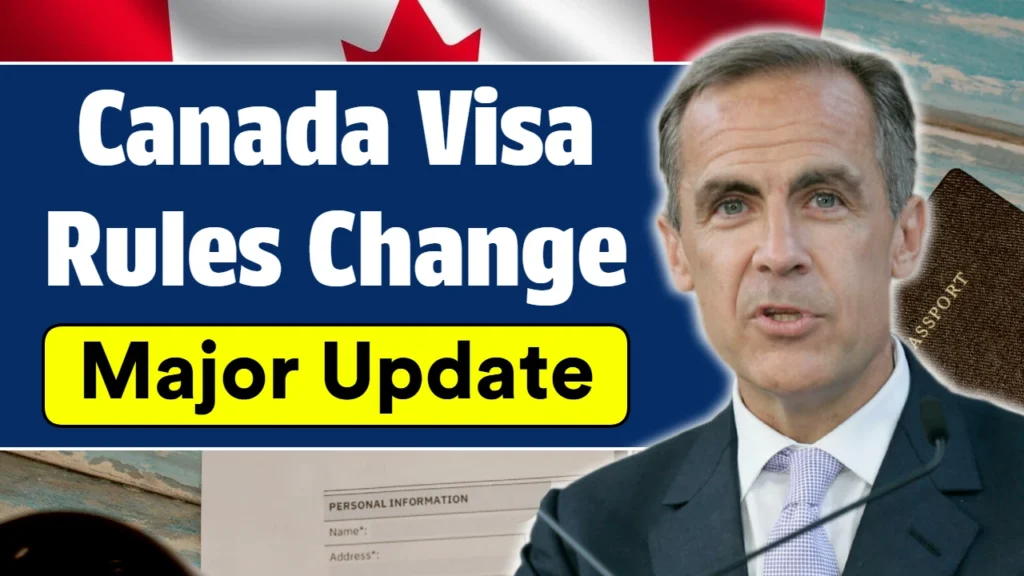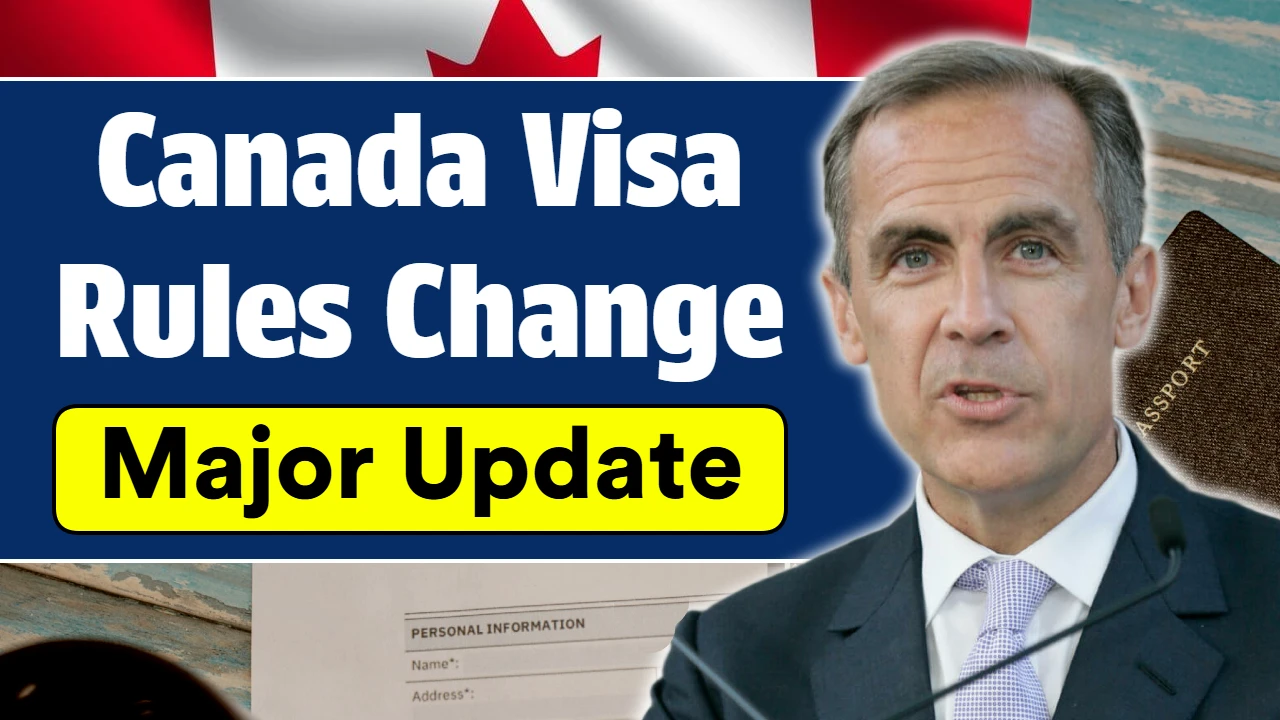Canada’s immigration system is undergoing one of its biggest transformations in recent years. As of 2025, the Canadian government has introduced a series of new visa and residency rules that aim to streamline applications, attract skilled workers, and balance the country’s growing population demands with labor shortages.
If you’ve been planning to study, work, or settle in Canada, these updates could directly impact your eligibility and processing timeline. From new point-based adjustments to faster digital visa approvals, here’s everything you need to know about the Canada Visa Rules Change 2025 — explained clearly and accurately.
Also Read : Top 10 Rare U.S. Coins Collectors Are Desperately Hunting for in 2025
Why the Rules Have Changed
In 2025, Canada’s Ministry of Immigration, Refugees and Citizenship (IRCC) announced new policies under the Modern Immigration Framework Initiative. The goal is to address record-high immigration levels while ensuring that the influx of newcomers aligns with job market needs and provincial labor shortages

With over 500,000 new immigrants expected annually, Canada’s focus is now on quality over quantity — prioritizing skilled professionals, healthcare workers, tradespeople, and international students in key fields such as AI, engineering, and clean energy.
Immigration Minister Marc Miller stated, “We are building a faster, smarter, and fairer system that connects talent directly to Canada’s economic priorities.”
Major Changes in Canada Visa Rules 2025
Here’s a breakdown of the most important updates introduced in 2025:
1. Revised Express Entry System
The Express Entry program — Canada’s main immigration pathway for skilled workers — has been updated with new occupation-based draws. Instead of relying solely on Comprehensive Ranking System (CRS) scores, applicants are now grouped and invited based on their specific professional categories.
In-demand fields for 2025 include:
- Healthcare and Nursing
- Construction and Skilled Trades
- IT and Cybersecurity
- Agriculture and Food Processing
- Education and Early Childhood Care
This means that even if your CRS score is below previous cutoffs, you may still qualify if your occupation is in a priority sector.
2. Faster Digital Visa Processing
The IRCC has rolled out a new AI-assisted processing platform, reducing average visa approval times by up to 40%. Study permits, visitor visas, and work permits now use biometric data and document verification tools that speed up background checks while maintaining strict security.
Applicants can now track their applications in real time through the updated IRCC Portal, which offers live status updates, chat support, and estimated decision dates.
3. Updated Financial Proof Requirements
The minimum financial proof for students and work visa holders has been increased in 2025 to reflect inflation and cost-of-living adjustments. Applicants must now show sufficient funds to cover at least 12 months of living expenses, plus tuition or relocation costs.
For example:
- Single student: Minimum CAD $20,635 in savings.
- Couple or family: CAD $25,000–$30,000, depending on dependents.
This change ensures that newcomers can support themselves comfortably without relying on government assistance.
4. Provincial Nominee Program (PNP) Reforms
Each province in Canada now has expanded authority to invite skilled candidates based on its labor demand. For example, Alberta and Saskatchewan are prioritizing tradespeople, while Ontario and British Columbia are focusing on healthcare and tech professionals.
The PNP process has been digitized, and candidates can now link their Express Entry profiles directly with provincial nomination systems — a first in Canada’s immigration history.
5. Post-Graduation Work Permit (PGWP) Changes
International students graduating in 2025 will see new PGWP rules:
- Graduates from recognized institutions can get work permits up to three years.
- Students in STEM and healthcare programs are eligible for extended permits up to five years.
- Students from unaccredited or private institutions may no longer qualify automatically.
This rule encourages international graduates to contribute to high-demand sectors and ensures fair access to long-term employment opportunities.
6. Language Proficiency Updates
Canada now accepts more language test formats (including online-proctored versions of IELTS and CELPIP). Minimum required scores for skilled worker programs remain at CLB 7, but some high-demand professions have reduced requirements to CLB 5–6 to attract a broader pool of talent.
Eligibility Overview for 2025
To qualify for immigration or work in Canada under the 2025 rules, you generally must:
- Be under 50 years old (preferred for Express Entry scoring).
- Hold a recognized degree, diploma, or trade certification.
- Have work experience in a listed priority occupation.
- Demonstrate language proficiency (English or French).
- Meet the financial and health requirements set by IRCC.
Certain programs like the Family Sponsorship, Caregiver Pilot, and Startup Visa retain their previous eligibility rules, though processing has become faster.
How to Apply Under the 2025 System
Here’s the step-by-step process to apply for a Canadian visa in 2025:
- Determine Your Program:
Visit www.cic.gc.ca and use the “Come to Canada” tool to check which program fits your profile — Express Entry, PNP, Student, or Work Visa. - Create an Online Profile:
Submit details about your age, education, experience, and language test scores. You’ll receive a CRS score or category-based eligibility status. - Get Your Documents Ready:
Required documents include:- Passport and education credentials (ECA report)
- IELTS/CELPIP or TEF results
- Proof of funds
- Job offer (if applicable)
- Medical and police clearance certificates
- Submit and Track Application:
Upload all documents and pay the application fee through the secure IRCC online portal. You can then monitor your application’s progress in real time. - Receive Your Invitation to Apply (ITA):
If selected, submit your full application within 60 days. Decisions are typically issued within 3–6 months, depending on your program type.
Why These Changes Matter
Canada’s 2025 immigration reforms aim to balance population growth with workforce needs. By prioritizing skilled professionals, digital transparency, and faster approval times, the country hopes to maintain its reputation as the world’s most immigrant-friendly destination — while protecting economic stability.
For international students and professionals, this means more opportunity but also more accountability. Stronger documentation, verified experience, and compliance with digital rules are key to success.
Quick FAQ
Q1. When did the new visa rules take effect?
The 2025 immigration framework began rolling out in January 2025, with full implementation by June 2025.
Q2. Do these changes affect students already in Canada?
No, current visa holders remain under the previous conditions, but extensions and renewals will follow the 2025 guidelines.
Q3. What’s the new processing time for Canada visas?
Most Express Entry and work visas are now processed in 3–6 months, thanks to the AI-based digital system.
Q4. Where can I check official updates or apply?
All official announcements and applications are handled only at www.cic.gc.ca, the official IRCC website.
Disclaimer: This article is based on official IRCC announcements, Canadian government press releases, and verified immigration updates as of October 2025. Policy adjustments may continue throughout 2025–2026. For verified information, always refer to the official Government of Canada immigration portal.

1 thought on “Canada Visa Rules Change 2025: New Immigration Rules, Eligibility, and Updated Application Process You Must Know”